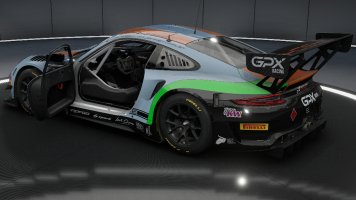Assetto Corsa Competizione has been updated to version 1.8.11 on Steam, which brings minor bug fixes and improvements to the sim.
Kunos Simulazioni has released an update to the PC version of Assetto Corsa Competizione. Version 1.8.11 is now available on Steam, and it brings a shortlist of hotfixes.
Perhaps the most notable change here is the fix to acceleration rate while running a setup with negative toe. Some users had reported that running unusually high levels of negative toe had resulted in unexpectedly improved performance.
This hotfix for ACC comes on a day of celebration for the Kunos team, as their GT racing focused sim is enjoying an "overwhelmingly positive" period of reviews on Steam currently. Of the 400+ reviews posted in the last 30 days, 95% have been positive.
Below is the changelog for Assetto Corsa Competizione's move to version 1.8.11. Let us know your thoughts on this update or anything else ACC related in the comments below.
Changelog:
Kunos Simulazioni has released an update to the PC version of Assetto Corsa Competizione. Version 1.8.11 is now available on Steam, and it brings a shortlist of hotfixes.
Perhaps the most notable change here is the fix to acceleration rate while running a setup with negative toe. Some users had reported that running unusually high levels of negative toe had resulted in unexpectedly improved performance.
This hotfix for ACC comes on a day of celebration for the Kunos team, as their GT racing focused sim is enjoying an "overwhelmingly positive" period of reviews on Steam currently. Of the 400+ reviews posted in the last 30 days, 95% have been positive.
Below is the changelog for Assetto Corsa Competizione's move to version 1.8.11. Let us know your thoughts on this update or anything else ACC related in the comments below.
Changelog:
- Fixed a potential issue with cars in pitlane triggering yellow flags.
- Fixed an issue with Hotlap session resetting setup when being restarted from outside the track.
- Tyre model fine tuning.
- Fixed negative toe acceleration issue.
- Fixed BMW M4 GT4 wet setups 0 wing and ducts.
- Fixed wet track limits and adjusted thresholds.
- Revised erroneous corner exemptions with track limit warnings on a number of tracks.
- Missing minimum driving requirement in team races now results in a SG30 rather than a Disqualification.
- Fixed potential stutters with font cache reloading.


